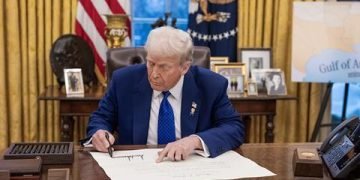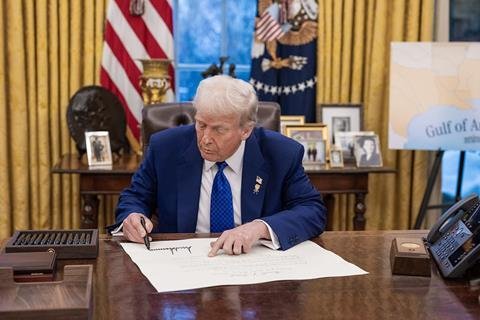By Eva Richardson | The Logistic News
April 10, 2025
The sweeping wave of U.S. tariffs targeting foreign-made automobiles is already sending shockwaves through the country’s major ports, with logistics experts warning of a looming crisis as thousands of imported vehicles accumulate with no clear path forward.
The Biden administration’s new 25% tariff on imported vehicles — part of a broader protectionist pivot in response to ongoing global trade frictions — officially came into force last week. But even before the policy was enacted, automakers scrambled to front-load shipments to beat the deadline. The result: U.S. ports now face growing congestion, and logistics providers are being pushed to their limits.
Ports Overflow as Automakers Hit the Brakes
According to sources close to port operations, hundreds of acres of storage space at key ports such as Baltimore, Los Angeles, and Brunswick are nearing capacity. Logistics providers report delays in offloading, and yard operators are bracing for further strain if vehicle throughput doesn’t resume soon.
“We’re reaching a point of paralysis,” said a senior port logistics manager in Georgia, speaking under condition of anonymity. “Cars are arriving faster than they can be cleared, processed, or moved inland. The space to hold them just isn’t there anymore.”
Luxury brand Audi, for instance, confirmed it is temporarily holding shipments at U.S. ports while evaluating its pricing strategy and dealer inventory levels. Models like the Q5 SUV, produced in Mexico, are among those affected. Other manufacturers, including Hyundai and Kia, are reportedly following similar strategies — slowing imports or rerouting cargo.
A Trade War with Consequences
In response to the U.S. tariffs, the European Union quickly announced retaliatory duties on $21 billion worth of American exports. China, hit hardest by U.S. measures with tariffs as high as 104%, issued its own countermeasures on U.S. goods, escalating an already fragile trade relationship.
These developments have cast a long shadow over logistics and supply chain resilience. “The sudden implementation of these tariffs has created an environment of severe uncertainty,” said Roger Li, senior trade economist at Global Freight Analytics. “Shippers are hesitant. Distributors don’t know how to price. And freight flows are now completely out of sync.”
According to rate platform Freightos, the market has witnessed a short-lived surge in demand as companies rush to beat the next wave of tariffs, especially on e-commerce items and auto parts. But beyond that, the outlook is increasingly bearish. “After the sugar rush of pre-tariff demand, we’re likely headed into a contraction,” said Freightos in a recent update.
Logistics Providers Sound the Alarm
The logistics industry, often the first to feel the tremors of economic disruption, is already seeing consequences. Several major U.S. 3PLs are reporting canceled Block Space Agreements (BSAs) and a decline in forward bookings beyond mid-May.
Neil Wilson, editor at TAC Index, noted that while current spot airfreight rates from Asia to the U.S. have temporarily risen, “the bigger concern is the long-term demand picture.” He added that the constant policy shifts are “undermining the ability of airlines, forwarders, and shippers to plan with any degree of confidence.”
Trucking companies, too, are facing a grim scenario. A recent analysis by the American Transportation Research Institute predicts a 7% decline in full truckload (FTL) demand by Q3 if consumer spending contracts as expected due to rising prices on imported goods.
An Industry at a Crossroads
For automakers, logistics providers, and policymakers, the current situation represents more than a short-term disruption. It’s a pivotal moment in the global trade order. The reliance on just-in-time inventory, international sourcing, and tariff-exempt e-commerce has been shaken.
Many in the industry now expect a realignment of production strategies. More OEMs may opt to “nearshore” or shift to domestic assembly to avoid tariff exposure — a trend already taking root before the latest policy shifts.
Conclusion: No Easy Road Ahead
As ports fill, trucks idle, and cargo volumes stall, the cascading effects of the U.S. tariff move are becoming painfully clear. The next few months will test the adaptability and resilience of the logistics industry like never before.
And while the intent may be to protect domestic industry, the immediate result is anything but business as usual.
Stay with The Logistic News for continuous coverage of the evolving global logistics landscape.























